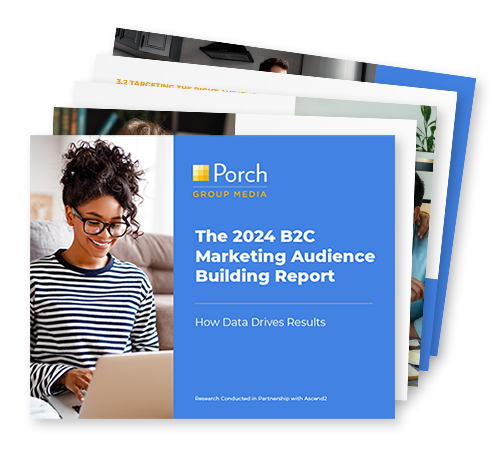Personalization allows brands to create experiences tailored specifically to individual customers. Today, with so much digital noise and AI-generated content, consumers are seeking these tailored experiences more and more.
According to research:
- 89% of marketers see a positive ROI when they use personalization in their campaigns
- 60% of consumers say they’ll become repeat customers after a personalized shopping experience
- 80% of consumers will share personal data in exchange for deals or offers
Understanding Data-Driven Personalization
Data-driven personalization leveraging customer data to deliver customized experiences across various touchpoints.
This data can include demographic information, past purchase history, browsing behavior, social media interactions, and any type of data that adds insights into the customer.
By analyzing this data, marketers can gain a multitude of insights into individual preferences, interests, and needs in order to create hyper-personalized experiences that address specific customer needs and motivations.
Data-Driven Personalization Enhances Customer Engagement
Personalization greatly enhances customer engagement and builds stronger relationships. Whether it’s addressing customers by name in email communications or recommending products based on past purchases, personalized experiences make customers feel valued and understood, leading to increased loyalty and repeat purchases:
- 36% of customers will return to a brand if they have had a positive experience, even if cheaper or more convenient alternatives exist. (Source)
- After a personalized shopping experience with a brand, 60% of shoppers think they will become repeat buyers. (Source)
- 80% of people who identify as frequent shoppers say they only purchase with businesses that tailor their experience. (Source)
5 Ways to Use Data to Drive Personalization
Here are 5 types of data and examples of how they can be used to drive personalized experiences.
1. Demographic Data
Information about customers’ age, gender, location, income level, education, and household size
- Example: A retail clothing brand collects demographic data from its customers and discovers that a particular customer, Sarah, is a 28-year-old female living in a suburban area with a moderate income level.
Based on this information, the brand tailors its marketing campaigns to showcase trendy yet affordable clothing options that align with Sarah’s demographic profile and lifestyle.
2. Behavioral Data
This includes data on customers’ past interactions with a brand, such as website visits, product views, purchases, and interactions with marketing campaigns.
Analyzing behavioral data can reveal patterns and trends that indicate customer interests and preferences.
- Example: Sarah frequently visits the retail clothing brand’s website and has previously viewed several dresses and accessories but hasn’t made a purchase yet.
Using behavioral data, the brand sends Sarah personalized email reminders featuring the items she showed interest in, along with exclusive discounts to incentivize her to complete her purchase.
3. Transactional Data
Data related to customers’ purchase history, including past purchases, order frequency, order value, and product categories purchased, provides valuable insights into their buying behavior and preferences.
- Example: After Sarah makes a purchase of a dress and a pair of shoes, the retail brand analyzes her transactional data and notices that she tends to buy items from the “casual wear” and “footwear” categories.
Leveraging this insight, the brand sends Sarah targeted recommendations for complementary products, such as casual tops and accessories, based on her past purchase history.
4. Engagement Data
Information about customers’ interactions with marketing channels, such as email opens, clicks, social media interactions, and app usage.
- Sarah frequently engages with the retail brand’s social media posts, particularly those featuring styling tips and outfit inspiration.
Recognizing her engagement patterns, the brand creates personalized content tailored to Sarah’s interests, such as curated styling guides, which are shared with her via email and social media channels.
5. Preference Data
This includes explicit preferences and interests that customers have indicated through surveys, preferences centers, or opt-in forms.
- Sarah has previously indicated her preference for eco-friendly and sustainable fashion options through a customer survey.
In response, the retail brand showcases its eco-conscious clothing line and sends Sarah personalized recommendations for environmentally friendly products that align with her values and preferences.
As consumers increasingly seek personalized interactions amidst the digital noise, leveraging customer data to personalize marketing efforts has become essential for businesses to stay competitive.




